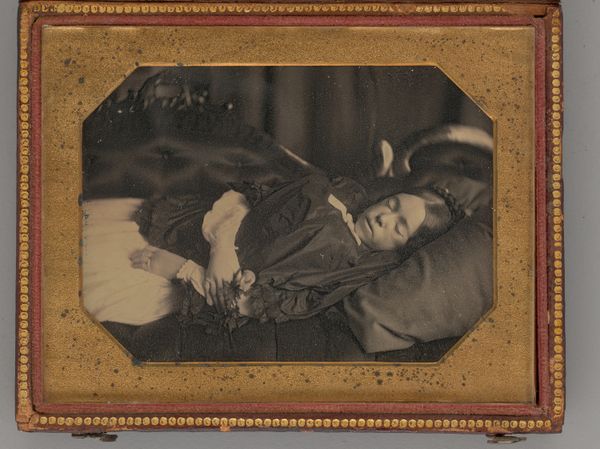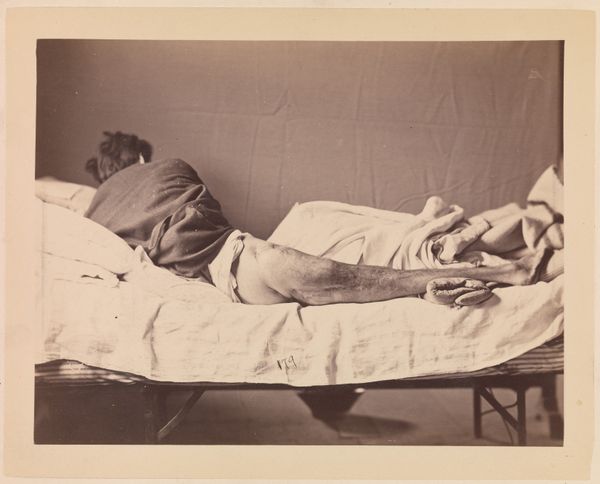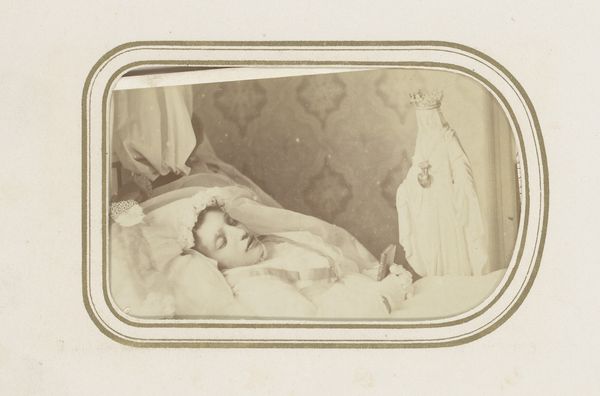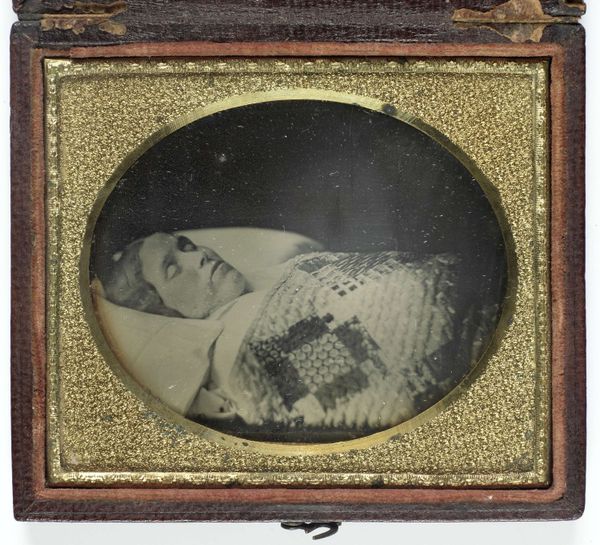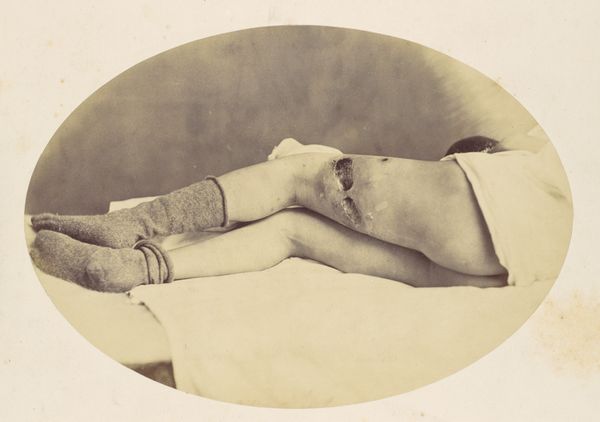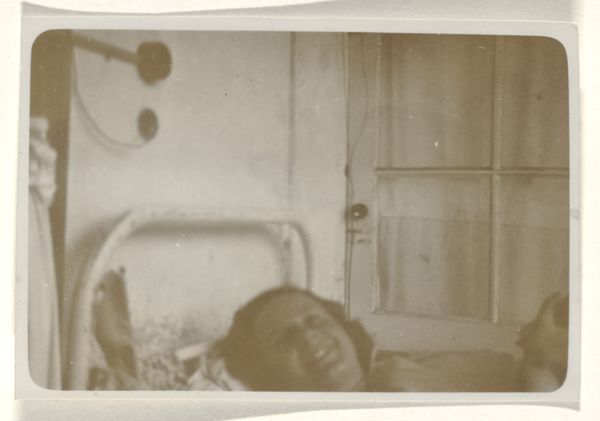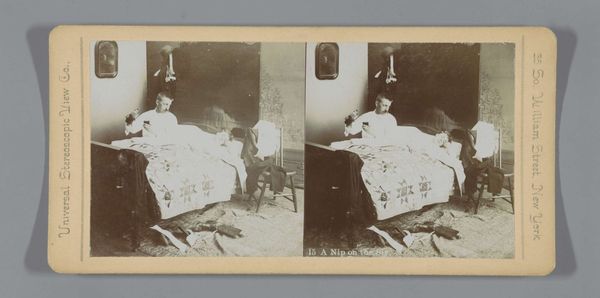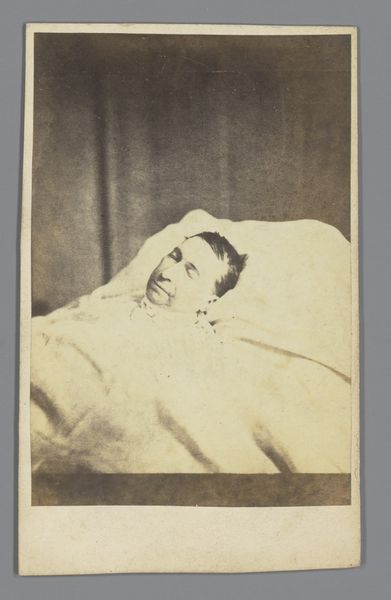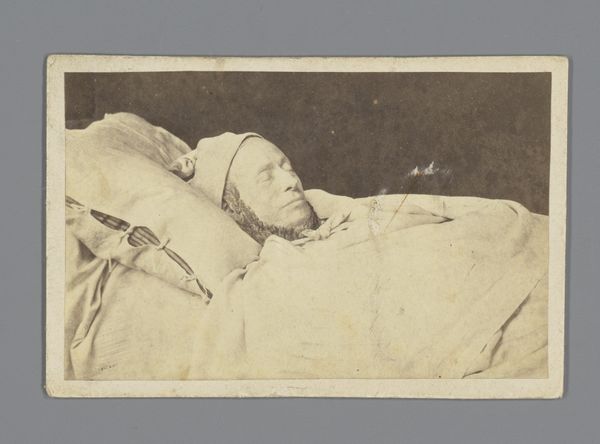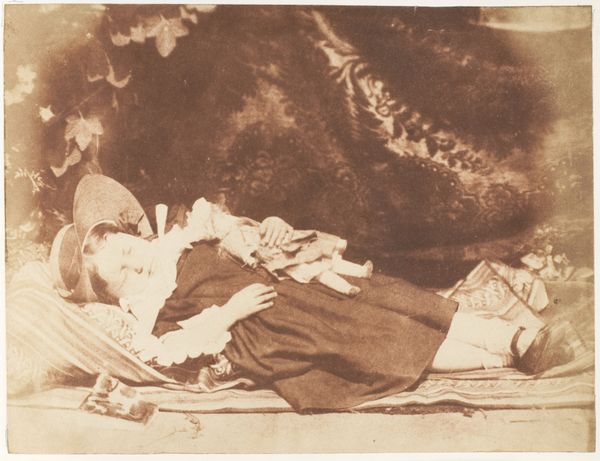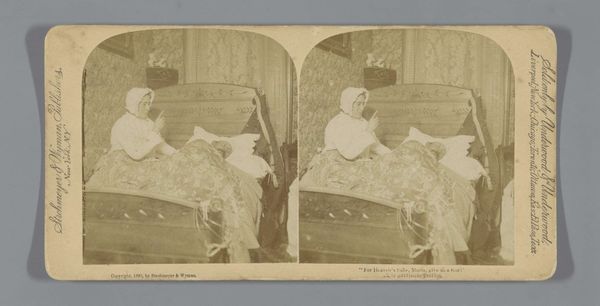
photography, gelatin-silver-print
#
portrait
#
war
#
photography
#
soldier
#
gelatin-silver-print
#
men
#
history-painting
Copyright: Public Domain
Reed Brockway Bontecou made this photograph of Frederick Pilgrim in 1865, likely using the wet collodion process. Here, we see the vulnerability of the human body and the ravages of war, symbolized by the graphic injury to Pilgrim's arm. Consider the visual weight of the wound: a dark void. Wounds, like the "memento mori" in vanitas paintings, serve as potent symbols of human suffering. Throughout history, images of wounded bodies appear—from the flayed skin of Saint Bartholomew to the pierced side of Christ. These representations elicit a visceral reaction, reminding us of our mortality. The image captures a moment of extreme vulnerability, inviting us to reflect on the cyclical nature of violence, healing, and memory. The wound, stark and unyielding, speaks of a deeper trauma—one that transcends individual experience. It evokes the collective memory of conflict and suffering.
Comments
No comments
Be the first to comment and join the conversation on the ultimate creative platform.
